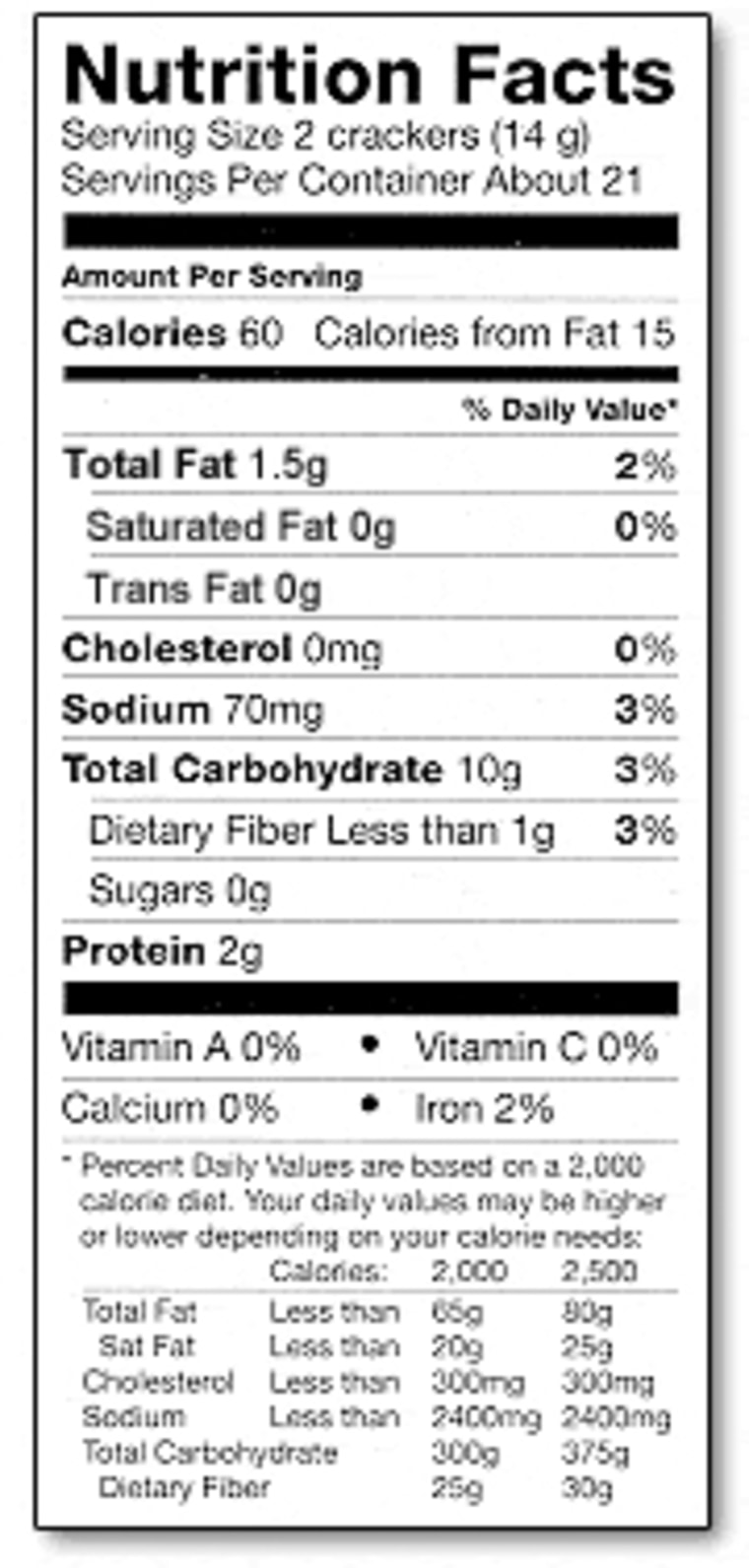If you have questions about today’s food labels, you are not alone.
Each week I receive more than 500 e-mails from viewers (and users of our Web site) questioning label claims and readability. And while it appears that just about every product on the supermarket shelves seems to be touting health benefits like: "more nutritious," "low-fat," "fewer calories," "won't cause tooth decay," and “heart-healthy,” it appears that shoppers are more confused than helped.
The most important question that needs to be answered is which claims can we believe? And, how can we tell fact from marketing?
So what IS legal to say? And what CAN actually help us choose healthier foods?
THE BASICS
“Serving Size”At the top of each Nutrition Facts label you'll see the serving size — this is the amount of the food you need to eat to get the listed nutrients and are based on the standards set by the FDA. However, it’s important to note that the package may contain several servings. For example, some products, like a bottle of soda, may list more than one serving. Or for many snack foods, the servings per package listed may be very different than what you may actually consume. For example, some bags of microwave popcorn list “3” servings for the package. Consume the entire bag (which many of us do) and you’ve eaten three times the amount of calories, fat and other nutrients listed on the package for one serving.
“Sodium-, Calorie-, Sugar-, Fat-, etc. Free”One of the most confusing labeling laws surrounds the word "free." The implication is that when coupled with fat, sugar, calories or sodium, free means “no trace of this particular item." You would think so, but not true. According to the FDA, fat- or sugar-free means less than 0.5 grams per serving; sodium-free and calorie-free mean less than 5 grams. Confusing, right? Make sure you always read the serving size in the Nutritional Facts and multiply the value of any nutrient times the amount of servings you typically consume.
“Trans Fat-Free” In 2006, the FDA will require manufacturers to list separately the amount of trans fat that their products contain. Many companies have already started to reformulate and remove trans fats from their products based on studies that have shown that trans fats (as well as saturated fats) increase a person’s risk of heart disease. Until 2006, look in the ingredient list for words such as “hydrogenated,” “partially hydrogenated” or “shortening,” all of which are clues that trans fats or saturated fats are present.

“Healthy”Healthy can only be used on a label if the food is low in fat and in saturated fat and a serving does not contain more than 480 milligrams of sodium or more than 60 milligrams of cholesterol. But buyer beware: That definition only applies to the word “healthy” used as a claim — not when used as part of a brand name.
“Lite” or “Light”The most misused term of them all. This label can mean that the product contains one-third fewer calories or half the fat of the referenced food; or that the sodium content of an already low-fat, low-calorie food has been reduced by 50 percent; or that the food is lighter in color or texture (as long as there is information on the label qualifying what "light" means). It’s essentially meaningless unless you compare the item’s nutrition information with its non-light counterpart.
“Reduced” or “Less”This label means the product contains at least 25 percent fewer calories per serving than the referenced food.
“Sugar-free”Defined as less than 0.5 grams sugar per serving.
“Low-Carb”
Neither the USDA nor FDA has defined the terms “low-carb” or “net carbs,” therefore this labeling is not only misleading but technically illegal.
“Certified Organic”There are four new organic categories: “100 percent organic”; “Organic”— defined by the USDA as containing 95 percent organic ingredients; “Made with organic”— includes products with at least 70 percent organic ingredients; and products with less than 70 percent organic ingredients, which are only allowed to list the organic items in the ingredient panel on the side of the package.
Many consumers already are confused about organic foods, which is why it is important to understand what organic is, and is not. The truth is that the benefits of organics are quite simple:
Organic standards require that the land used to grow organic crops go through a three-year "transition period" to make sure the crops are free of synthetic pesticides and synthetic fertilizers.
All organic agriculture prohibits the use of synthetic pesticides and fertilizers, irradiation, sewage sludge, and growth hormones, and no genetically modified organisms can be contained in anything labeled organic.
“Cage-Free” or “Free-Range” Not a health claim — this just means that the chickens are not locked in cages, and are "free" to roam. "Free range" means the chickens are allowed to roam outdoors. "Cage-free" doesn't necessarily mean much; eggs labeled "cage-free" often come from hens packed side by side in massive sheds with access to the outdoors.
Phil’s Bottom Line: Read those labels carefully, and if there is a claim on the front of the package, ALWAYS be sure to read the ingredients carefully!
PHIL’S BONUS BIT
“PLU” secrets You know that annoying little sticker that is now on every piece of produce you buy? That’s called a “produce look up” (PLU) number that is designed to help the cashier properly identify the item. But it also has a secret code:
Organic adds a '9' in front of the four digit PLU code. Example: an organically grown standard yellow banana would be '94011'.
Genetically engineered foods add an '8' in front of the four digit PLU code. Example: a genetically engineered standard yellow banana would be '84011'.
Phil Lempert is food editor of the “Today” show. He welcomes questions and comments, which can be sent to